Blog 2 - 13 January 2025
Now is the time – they need you and you need them! Who? The birds... “ Bizarre, Brilliant, Beautiful” - words from the Natural History Museum. A description applicable all over the world, and in your garden and mine. They have become part of life’s backdrop. They have been here a long time... since the dinosaurs. But this doesn’t guarantee them a place in the future; globally one in eight bird species is endangered. Our local “ordinary” sparrows, starlings, greenfinches, house martins, etc have steadily dwindled. Our busy lives go on - behind schedule, too much to do, and suddenly one notices “the usual” is absent. Birds need us...
The best way to help birds (particularly in lean winter months), is to have wilder areas where they can forage naturally, as well as feeding them - breadcrumbs, kitchen scraps, seed, peanuts, fat. Feeding gives a reliable backup when natural food is scarce... and gives you a chance to see and appreciate their ways. Feeder choice depends on your priorities – feeder features with photos.
Clean water is essential for all birds - sparrows
Photo 2 “Cage” fitting over tubular feeder welcomes small birds and deters most squirrels; tray saves mess and creates unofficial bird table - greenfinches
And we need them... we have pinched many bird designs for our own purposes. Bird day to day structural designs reappear in many guises, from wind turbines and trains to aircraft wings, from small drones to big stadiums... and much more. Because in their immense timescale of trial and error they have come up with successful solutions - Brilliant and Bizarre. Structural designs for efficient flight and control, streamlined shapes, long haul navigation aids, economic fuel storage and utilisation, stereoscopic vision, night vision, ultrasonic sound detection, specialised architectural structures and more.
We’ll come to the Beautiful bit later... next blog...
From last year’s RSPB Big Garden Bird Count results, fewer wild birds were recorded visiting gardens, balconies and parks; some populations still falling. Good news was more goldfinches, benefitting from more garden birdfeeders -
this smart feeder allows access to small light-weight birds but closes under squirrel or magpie weight.
Woodpigeons were up, and long-tailed tits -
wire box design makes fat balls exclusively available to the long-tailed tits and other tits. Domes keep food dry and are squirrel “deterrents”.
Through the window view - “Einstein squirrel” in action who also worked out the “slinky” spring around the feeder pole!
Blog 3 - 20 January 2025
Winter grey... cheer it with a moment of quiet indulgent wellbeing! Sit, relax for the time it takes to savour your favourite cuppa and look... Enter the quieter world of nature’s pace and de-stress. The most obvious wildlife just now are the birds. To see more, start by putting out the bird food. The variety of bird feeders can be baffling, but ultimately it’s the birds which call the shots.
Straightforward easy-clean seed feeder – Nuthatch through the window.
Same feeder, positioned in front of window to deter squirrel theft.
Dome protects against average squirrels with vertigo. Upfront super smart squirrels without vertigo and gifted with acrobatic skills hang on by one toe and loop down and round dome while looking you in the face! Dome also protects from rain, appreciated by bird visitors. Tray catches spilt seed making tiny bird table and reduces mess (which can encourage rodent attention). This Great Tit chews up its seed at the feeder, some like to move to sheltered safe cover to eat a seed in safety. Feeder positioned beneath wisteria gives them the option.
Even larger heavier birds such as Collared Dove can manage a hanging feeder given the tray as a perch.
Female Bullfinch feeds from tray. Cage defence deters average squirrels, pigeons and magpies, but there are smarter ones out there in waiting!
Don’t forget to provide for those ground feeders! Aging apples are food for Blackbirds, magpies, rooks, and smaller opportunists. Sprinkled food makes less mess if put in a plant pot tray – here, a Pied Wagtail.
Past summer plants, dry and seeding provide for small birds such as
goldfinches (one silhouetted against dark green at end of flower bed at top of blue-grey Russsian Sage. Old twiggery and structures also offer perching sites for checking out food availability, competitors and predators – on arch on left, a
Blue Tit.
– Winter fruits of ivy attract Woodpigeons.
...And don’t forget fresh clean water – Blue Tit.
Birds approaching feeders, eating or drinking are always on the look out for flying predators, or those waiting and watching in ambush. Here is a rare view of a beautiful, landed
Kestrel at Murhill, brilliantly photographed by Bob Drower.
Happy bird watching!
Blog 4 - 27 January 2025
Social chatter, sibling rivalry, quiet shy loners, go-getters, family sharing, decisive schemers, the very smart, the less smart, the slow learners, impulsive doers, the image posers... no, not some of the locals you met to welcome in the New Year... the birds visiting your garden.
Chatty Blue Tit family sharing the space and the fat.
And here is the Beautiful of the “Bizarre, Brilliant and Beautiful”... an imposing loner with image and attitude – a male Pheasant.
Small, and usually in a chattering gaggle, but for a moment aspiring to that attitude image! Common Sparrow.

Another habitual loner, but with seriously impressive attitude of upside-down skills to suit feeder and food - quiet, Nuthatch shy of people.
Bickering and rivalries over easy food access – Great Tits.
Coal tit, always arrives solo, but happy to feed alongside other species – small ones! Here with a Blue Tit.
Frequently one sees great variation in individual birds’ behaviours. Some less smart Blue Tits on seeing seed through a Perspex tube keep pecking, no... bashing the tube to try for seed, continuing relentlessly, and don’t notice or try the official feed hole lower down.
Blog 5 - 03 February 2025
Watch your back! While garden birds feed, predators wait in ambush – hanging in mid-air like this Buzzard, or, patrolling low on silent wings, fiercely alert like a dusk Barn Owl;
or Sparrowhawk style - watching from afar ready for a surprise zoom in like a jet attack. This is where your placing of feeders, and their surroundings becomes important to survival of small birds.
Robin – a tangle of shrub twigs within one to two metres of a feeder is ideal for checking the coast is clear, and as a site for eating a seed or crumb in safety.
A neighbouring tree lends itself as a high lookout post, here a Great Tit on the Cherry Plum on the other side of the lane opposite a feeder. Several families of Blue Tits, Great Tits and little flocks of Long-tailed Tits gather in it at a time.
Beyond offering shelter, particular trees are favourites as lookout posts, song posts, and gathering places for flocks before flying off to roost for the night. This Gingko tree is one of those. These ancient trees have been spreading their sparse angular branches for 290 million years, predating the dinosaurs and the first birds. They must have been a mainstay take-off and landing for the earliest birds, one might imagine them - possibly unsteady and unwieldy with newly acquired feathers, honing their flying skills... around 100 to 85 million years ago.
A few days ago, this inspiring Gingko across the lane was hosting a small flock of chirping Goldfinches (around the tree’s top) which happens late every afternoon. In the mornings a pair of magpies check out the day’s potential, and later in the year, it is the favourite song post of either Blackbird or Song Thrush. And a frequent resting place for Woodpigeons.
The birds visiting your feeders have also developed incredible mental skills during their long, long history. To survive a tough, cold winter they need to remember where different reliable sources of food are, i.e. your feeders, your neighbour’s and those down the road and beyond. Birds have very tightly packed brain neurons.

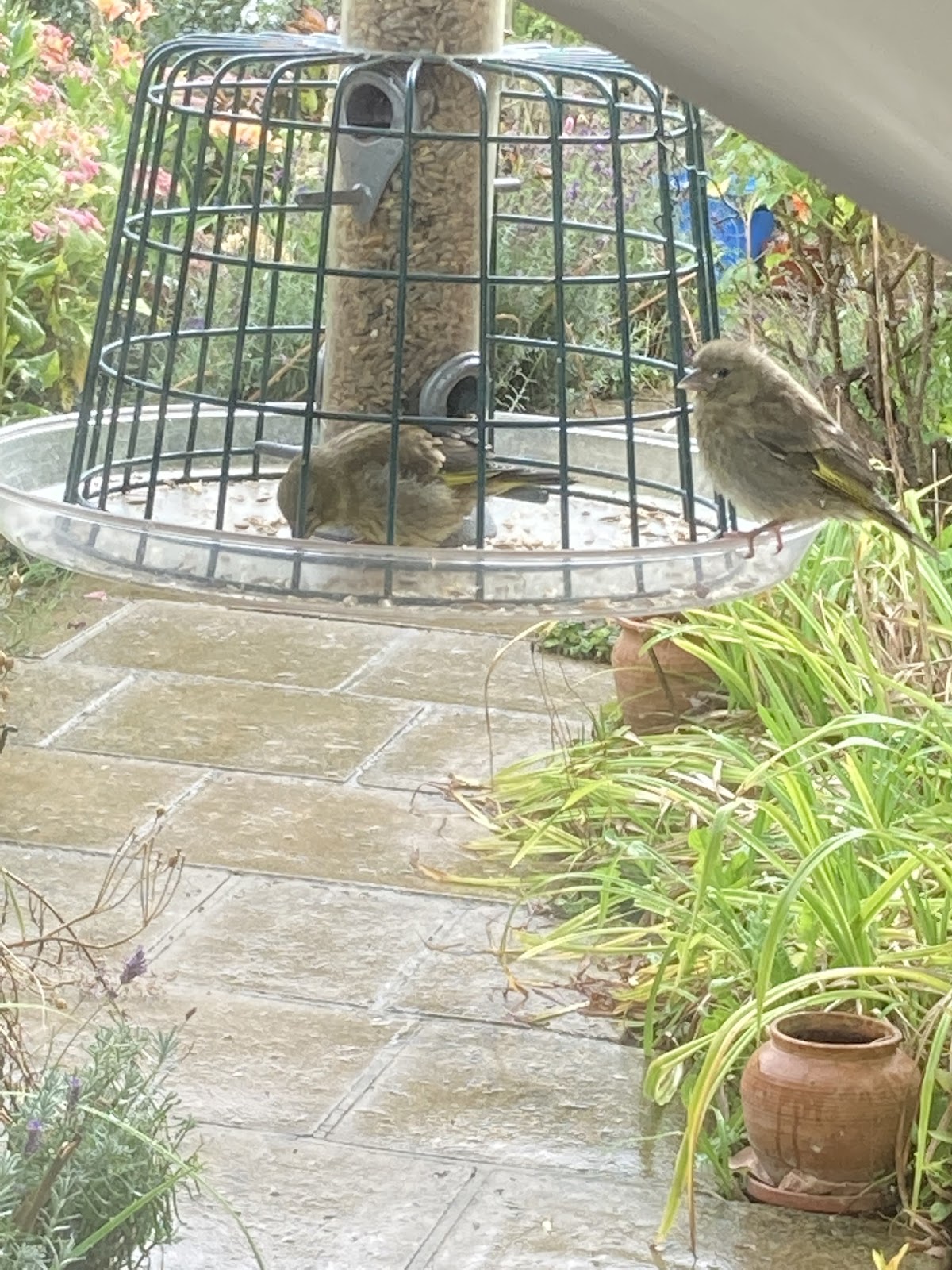
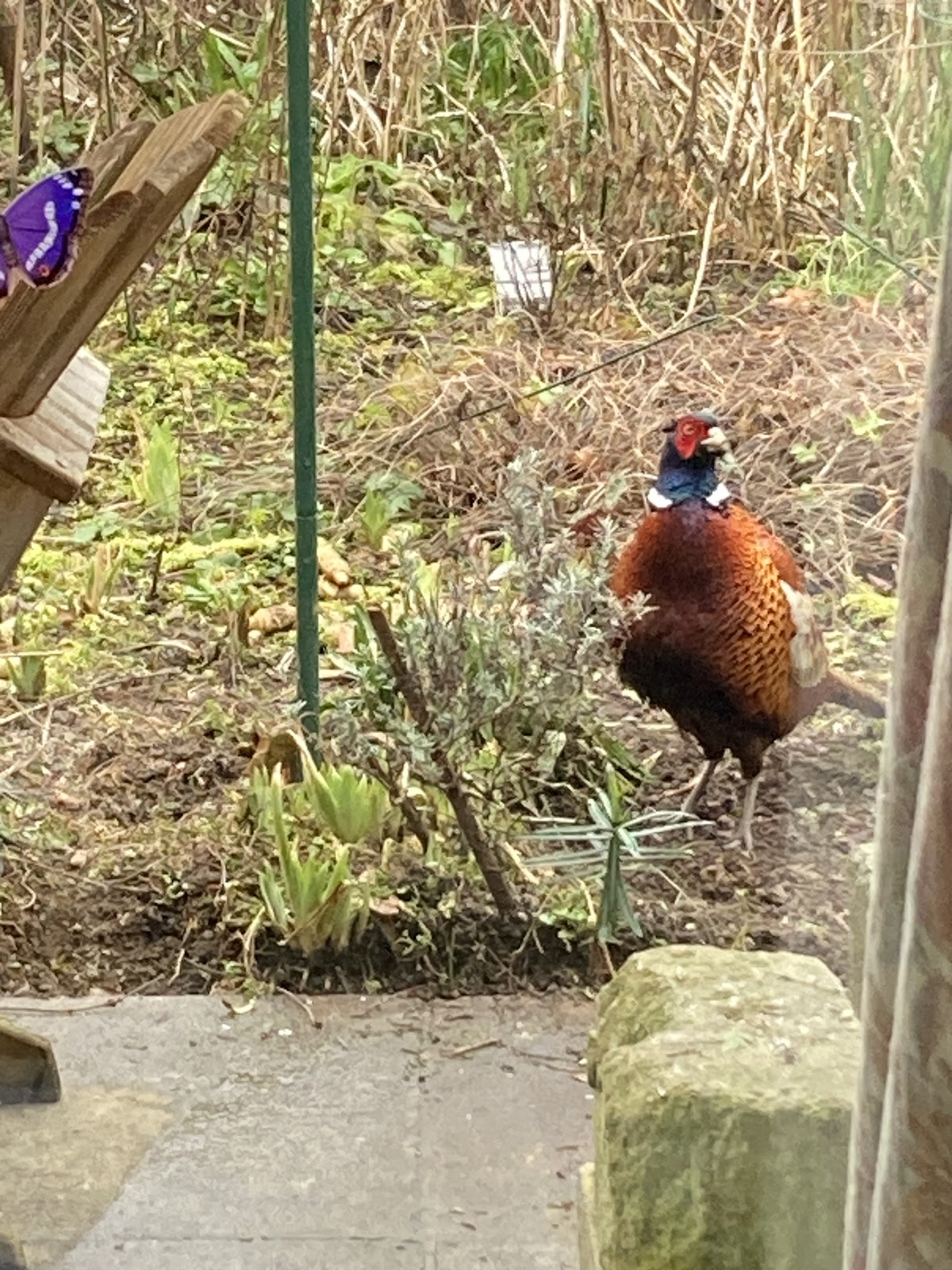




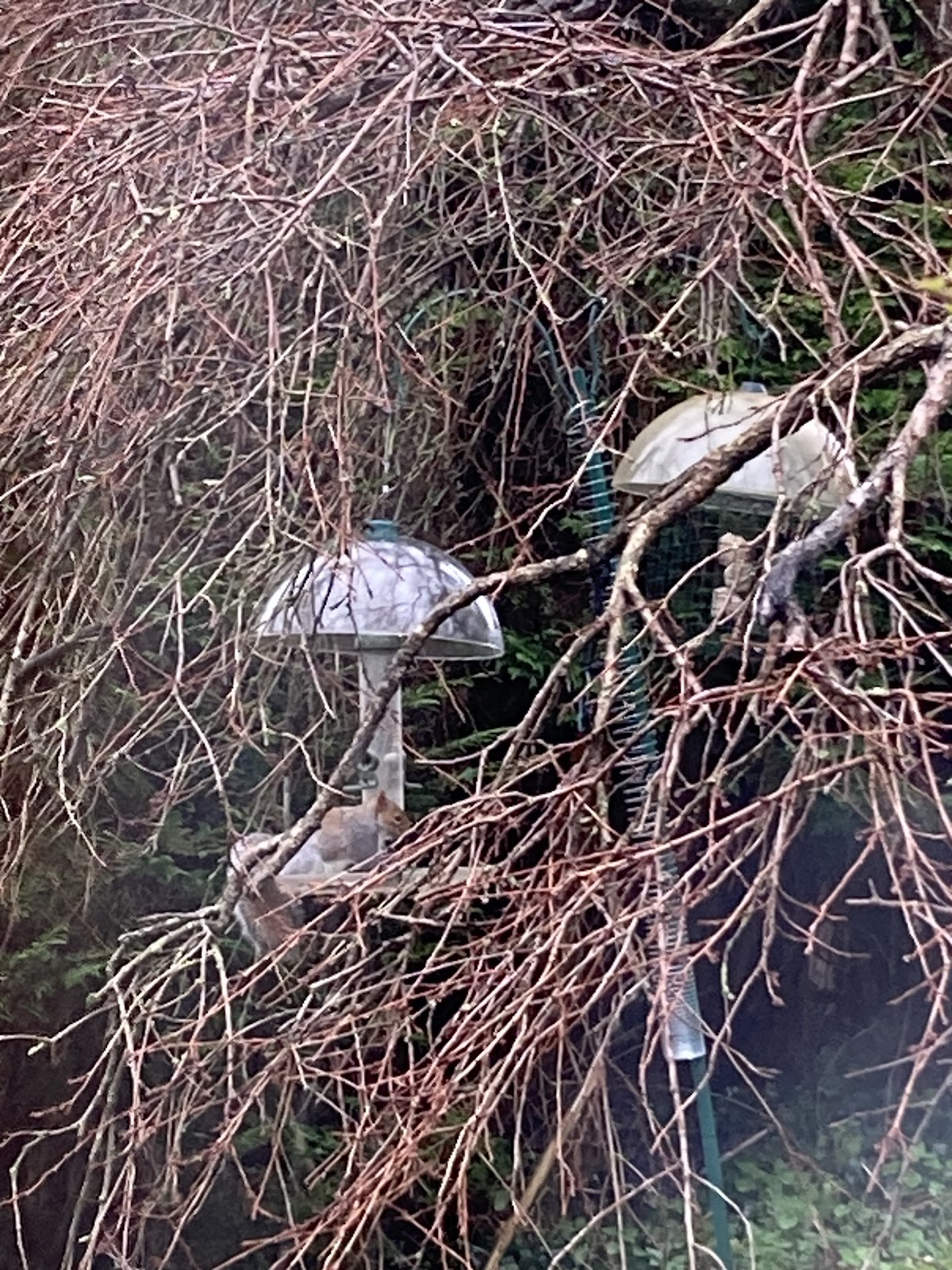





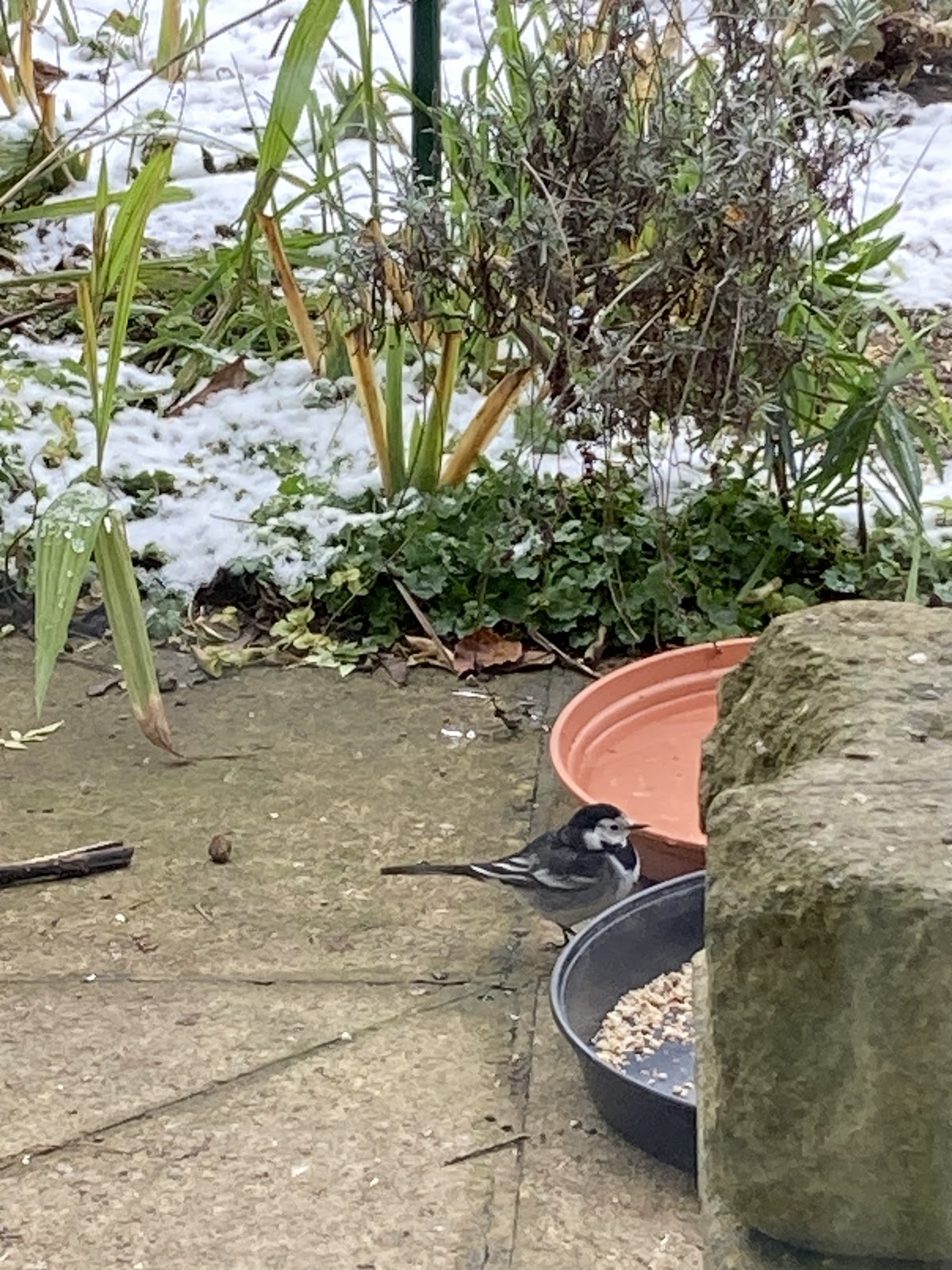
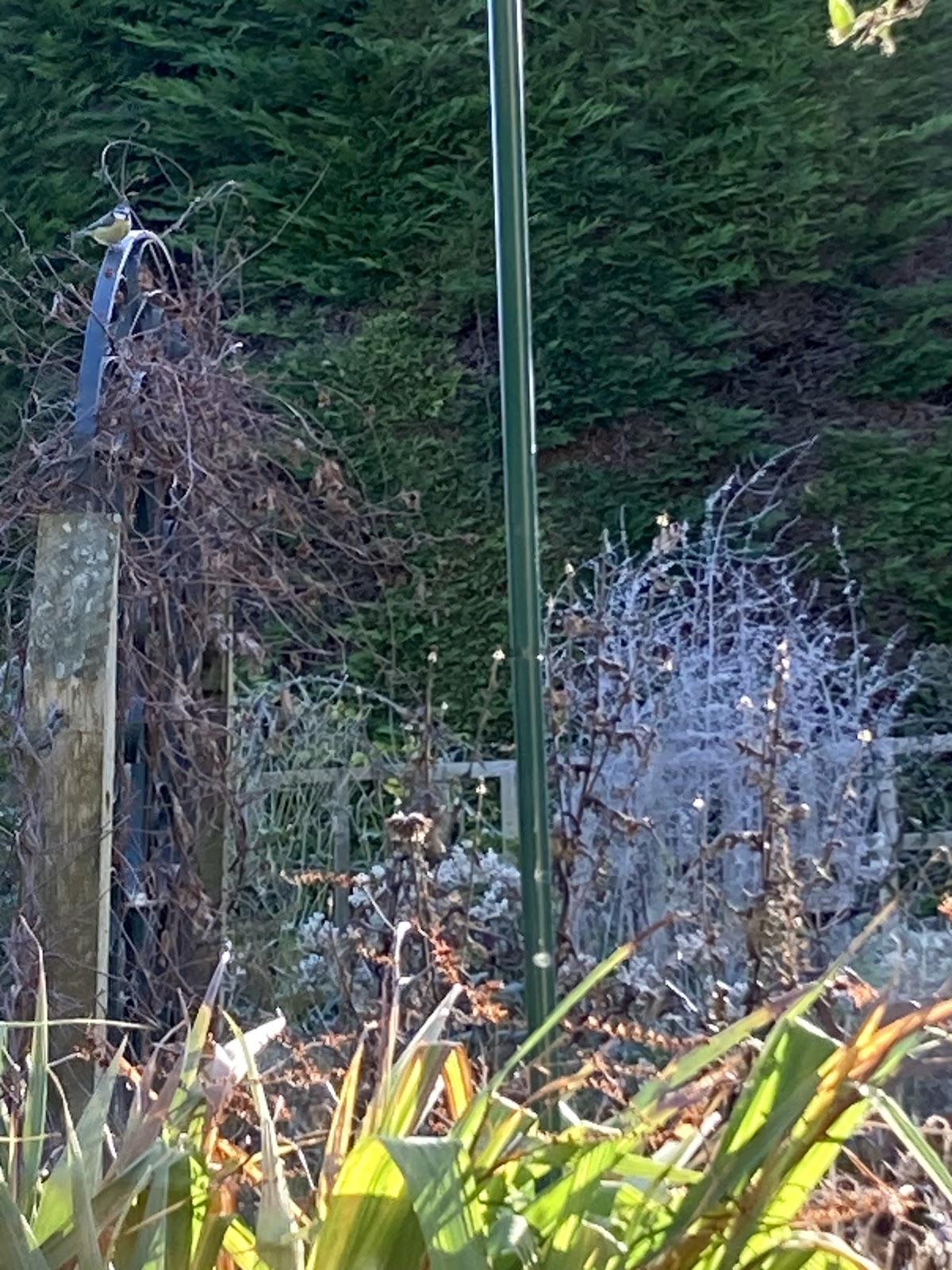


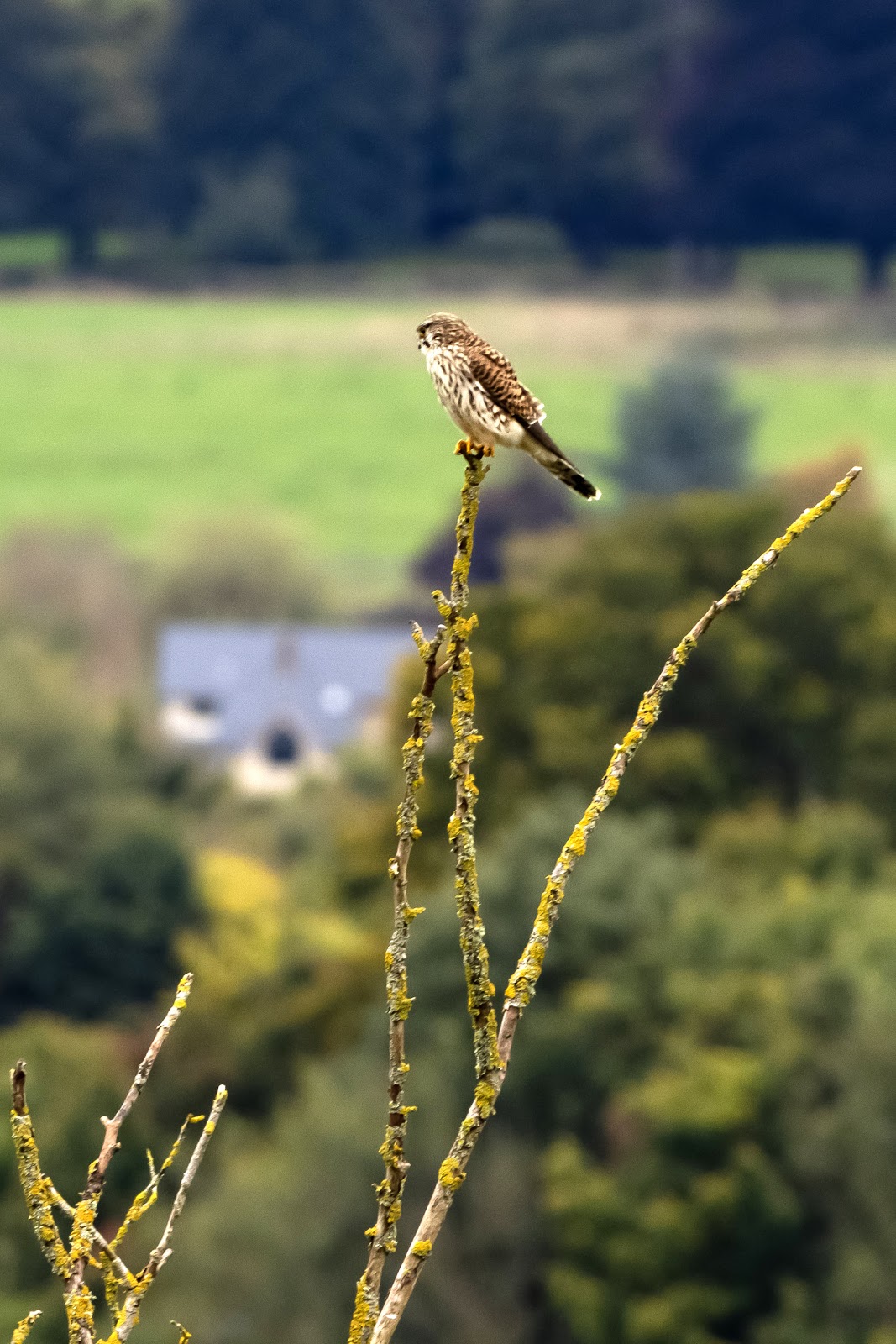

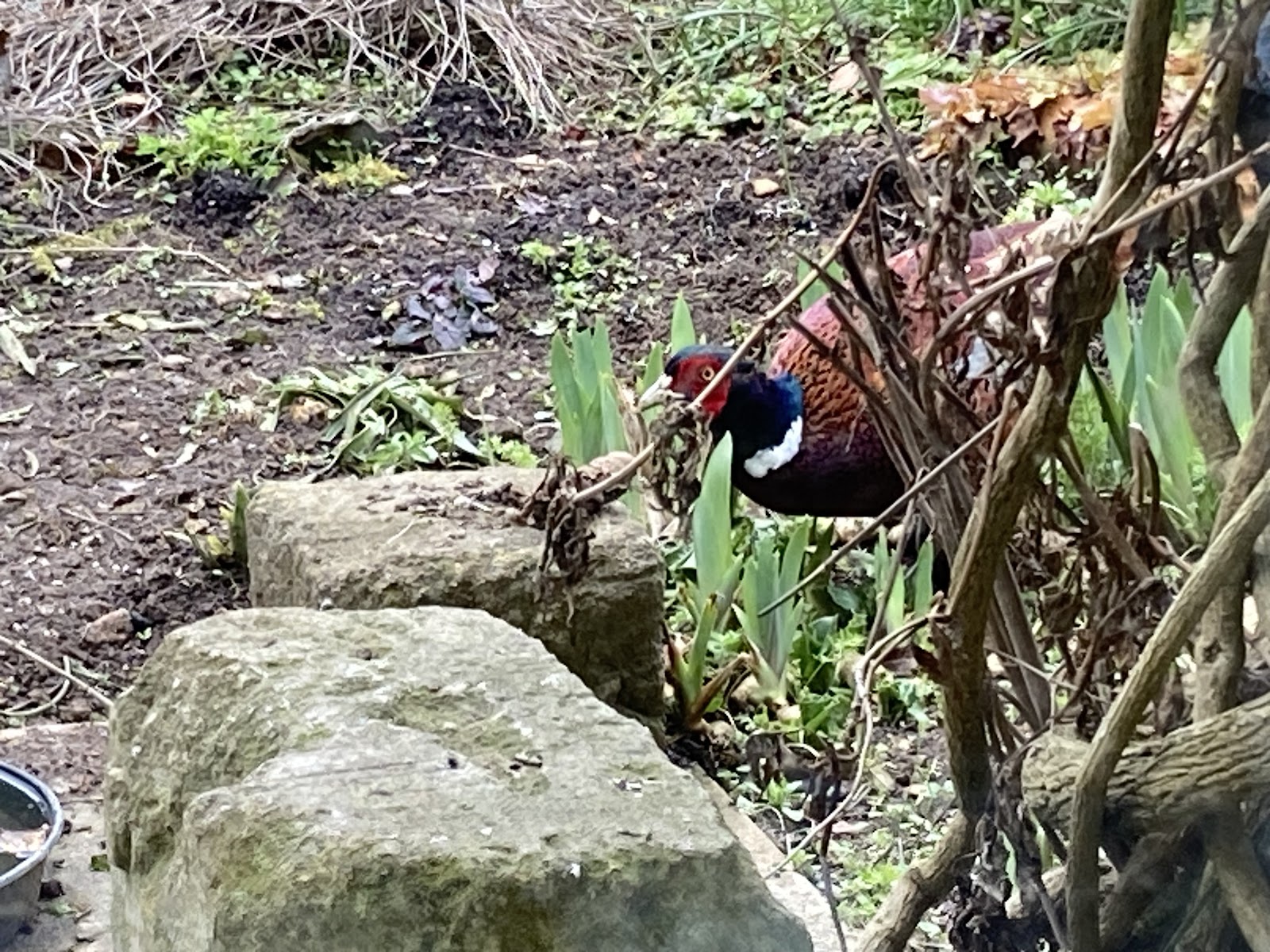





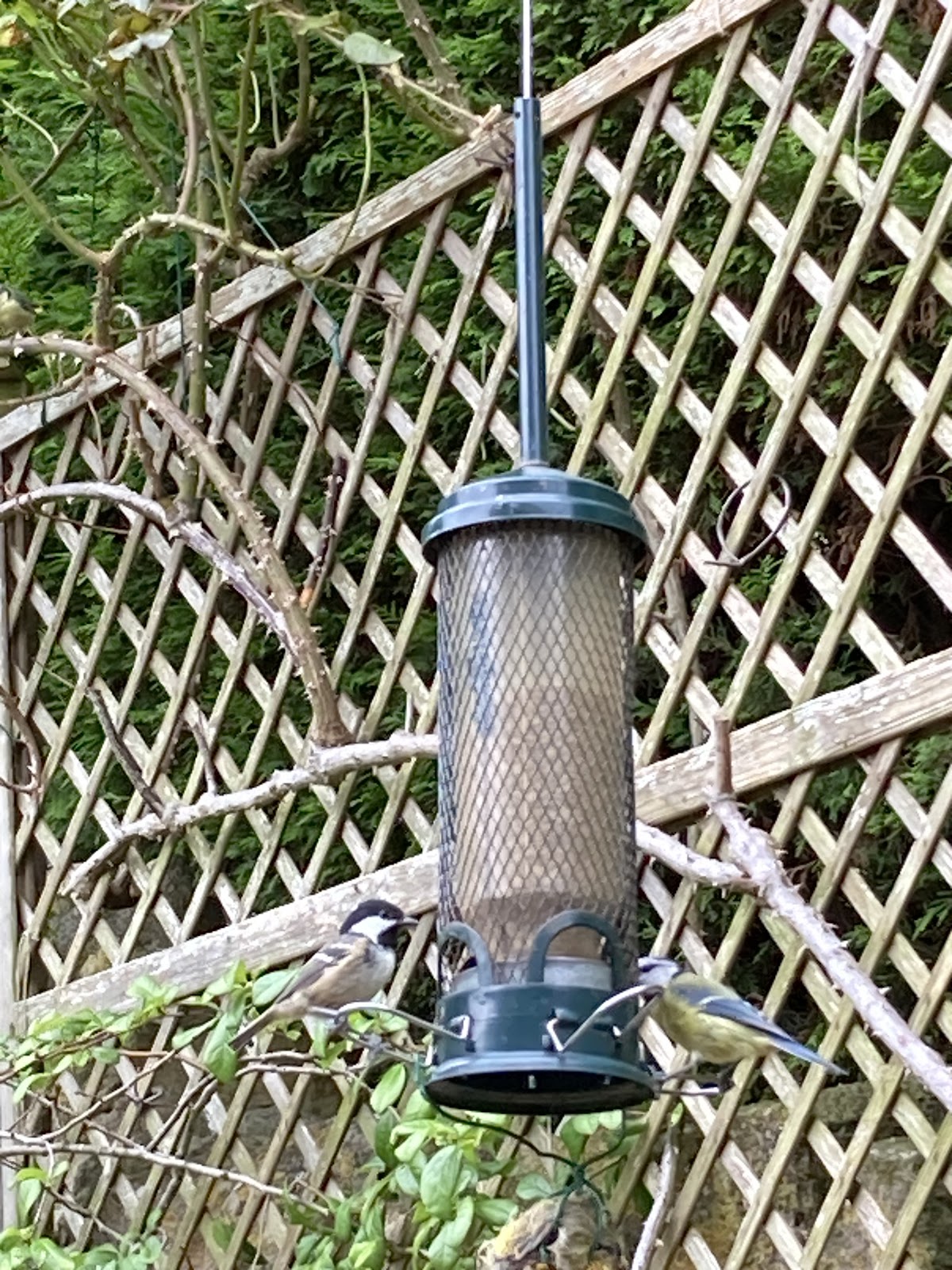


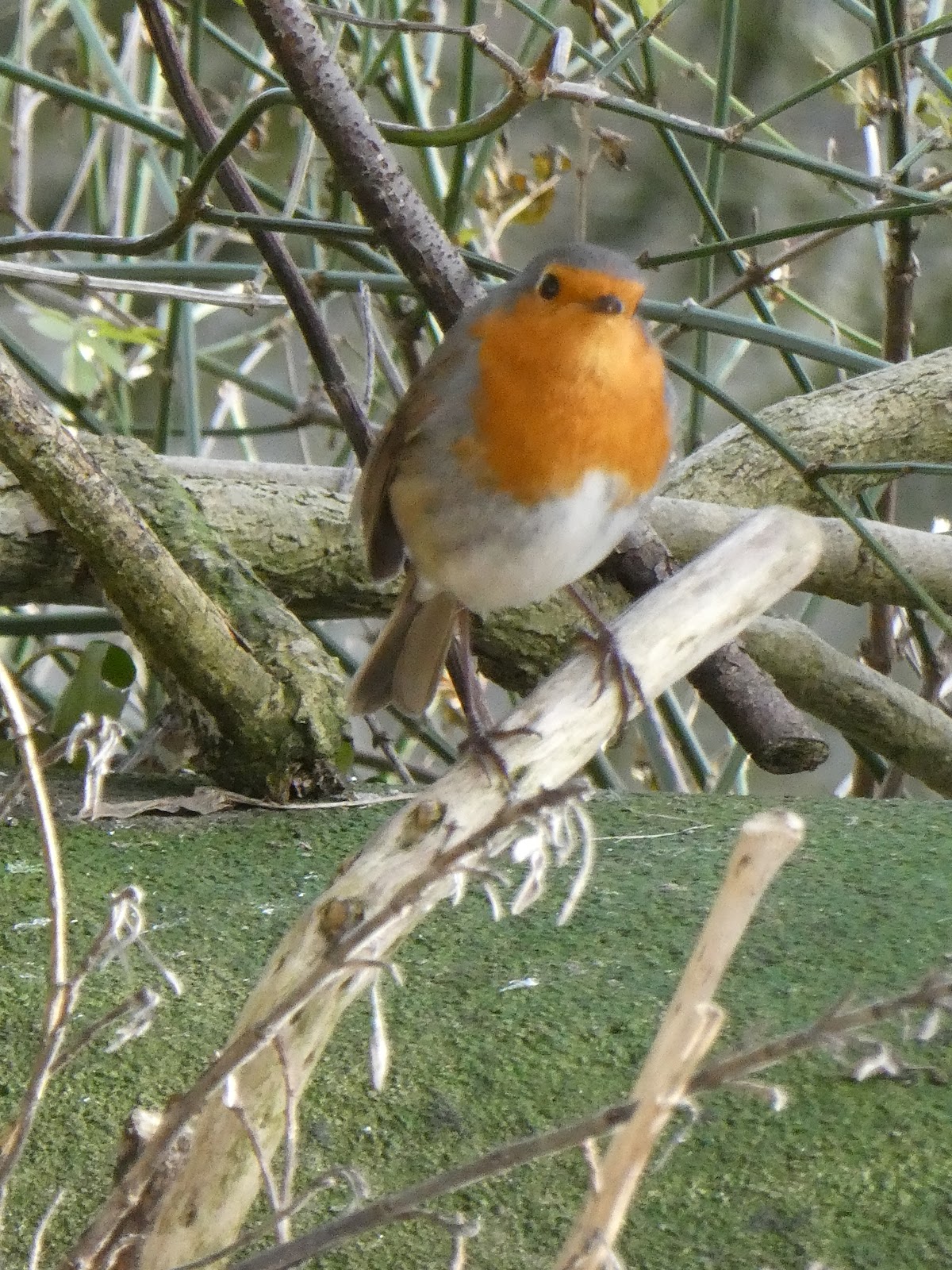



Comments
Post a Comment